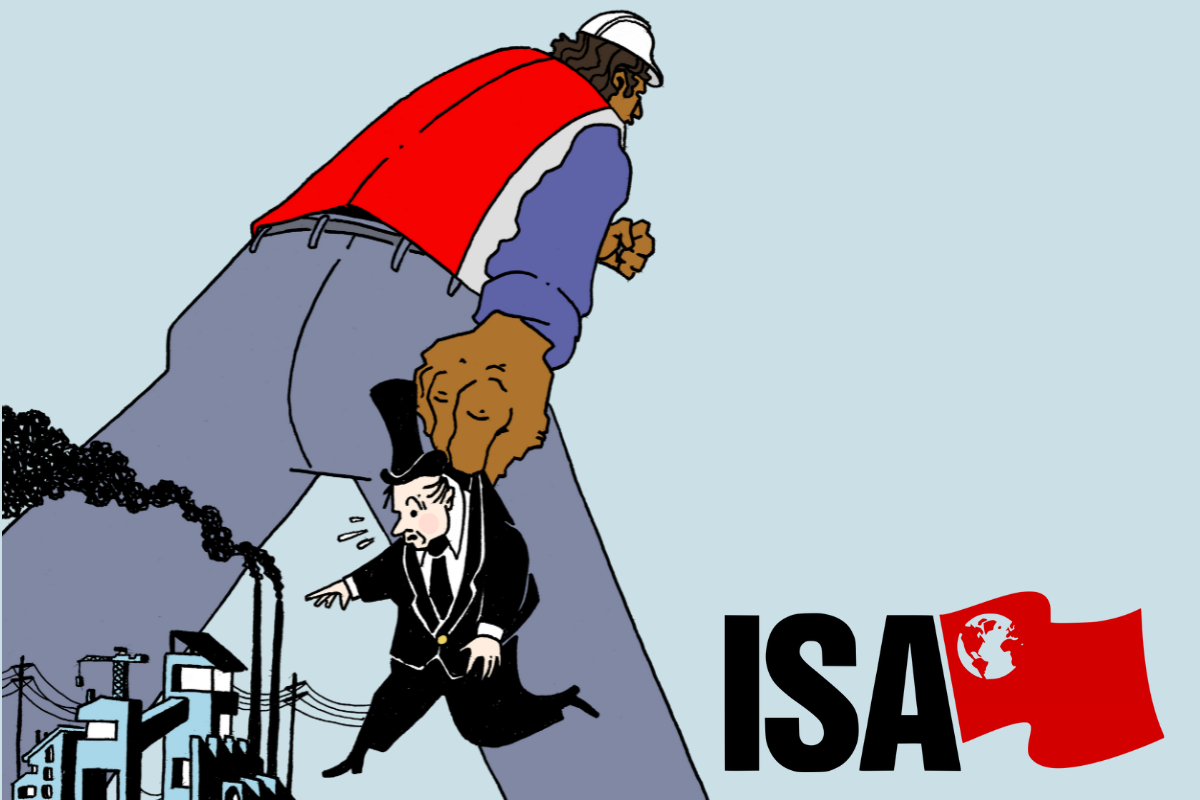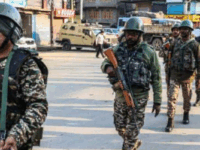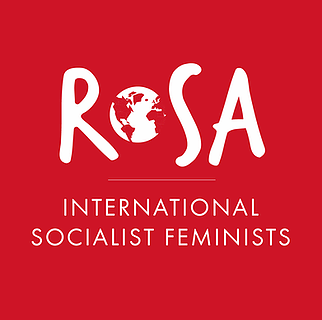An introduction to socialism and a Socialist Alternative

The world is at a crossroads. Rife with social turmoil, economic inequality, precarious employment, financial crises, violence and most importantly facing a looming environmental collapse, we can see by the rise of incidences of depressive and anxiety disorders the effect of the current state of the world on the people living in it. It is no surprise that many of today’s youth feel either hopeless or apathetic when faced with these prospects. However it is equally evident that the current state of affairs are not solving any of the aforementioned problems and never will.
So is there a way out? To paraphrase the German revolutionary Rosa Luxemburg, in order to prevent the collapse of human society into what would essentially be barbarism, we must transition it into a system that produces for human and environmental needs rather than profits and ensures the equitable and dignified distribution of resources among all of society rather than just certain privileged sections. What has been described here is the system of socialism.
The world we live in today is unequivocally capitalist, with an interconnected global market dominated by multinational corporations and mediated by capitalist governments of nation states. Capitalism has dominated global society for the better part of two centuries now, and although for much of the 20th century the bloc of countries led by the Soviet Union provided a counterbalance, the fall and dissolution of that bloc in 1989 has since seen capitalism once again become the dominant economic system in the world. Despite countries like China being formally communist, and led by a “Communist” Party, the economy is set up in a decidedly capitalist and authoritarian way, and China in particular plays a massive role in the world economy.
We mentioned the general problems that we face today after nearly two centuries of global capitalism, but what does living under this system mean in the day to day lives of ordinary people? Most ordinary people are workers in some way or another, and the workplace is the direct site of action for capitalism to affect us. We work a number of hours a day for an employer (a capitalist), usually in a place outside our homes (for which we need to commute for an amount of time merely to get to and from), and our labour contributes towards producing a product (or in technical terms, a “commodity”), which gets sold on the market by the employer for a profit. From these profits the employer portions out wages for us, which we then use to buy commodities – primarily food and other daily needs that ensure our survival i.e. our means of subsistence or “self-reproduction” but also, if we can afford them, any other items, luxuries even, that we may desire. And the cycle repeats for basically our entire lives.
If we then think about it, the wages handed out to the workers by the capitalists have to be less than the profits accumulated by the company, or else the company will suffer a loss, and eventually go under. One of the core tenets of capitalism is the principle of growth, hence a company has to keep making profits which it can use to reinvest in the company (or financial speculation) and produce commodities more efficiently i.e. increase its productivity, and so there is always a tension between the wages given out to the employees and the profits gained by a company. Karl Marx outlined this general principle in Das Kapital and his other works that workers, on average, do not get the full worth of their labour in their wages. The system is designed for this “surplus value” to be extracted from the workers and used to bolster the capitalists.
The workers, on the other hand, have to work for a wage as we described above, or else they will starve, because, crucially, they do not own the means of production from which they could create the commodities they need for their subsistence. This is the key dynamic of capitalism, and class society in general, where society is (broadly) divided between those who own the means of production and those who do not. All workers have is the capacity to work, which Marx calls “labour power” that they must “sell” to the capitalists for the price of their wage. (There do exist middle layers which consist of semi-autonomous tradesmen, small shopkeepers and street traders, etc. but these do not employ workers at the scale of the capitalists, and are themselves subject to the whims and fancies of the market in which they operate to survive in their trade.)
However, the workers do hold one trump card – they may be oppressed, but the system still runs on their labour. If we organise to withhold our labour as a class, the system can be brought to its knees. But even better still, if we go one step further and take control of the means of production (which we are in daily contact with), then we could re-organise society along drastically different lines. We will decide what gets produced, we will decide how much of it gets produced, and we will decide what to do with what gets produced.
This reorganisation of society will eventually lay the basis for a change in human attitudes as well, since the material basis for a lot of the divisions within society today will be taken away as the domination of the working class by the capitalist class is reversed. The capitalists that form the ruling class seek to divide the working class along various lines, be it religion, race, gender, or nationality. For example, while one’s faith or religion plays a huge role in their personal life, often providing a sense of solace especially in situations of distress and suffering, it is thus also a useful tool in perpetuating the ruling class’s hegemony. And religious institutions, acting as the authority of that faith, legitimise this hegemony of the ruling class and of the system. Besides, and as is clear in India’s case, these institutions are used to foment unrest and hatred between religions, in an attempt to restrict working class unity and solidarity.
Gender oppression in the economic sense in the pay gap between genders and the difference in jobs carried out by women vs men, sexual and domestic violence and general misogyny are also amplified and reinforced under capitalism and is clearly a massive problem in Indian society. A similar phenomenon of capitalism using a pre-capitalist oppression to further its hegemony is that of caste in India. Most of the land-owning and capital-owning elites are Brahmins, and the oppression of Dalits and other oppressed castes is enshrined in the capitalist practices of India. Thus poor Dalits are oppressed directly by the ruling castes and any solidarity between poor Brahmins and poor Dalits who are oppressed as workers by the capitalists is also undercut by caste division.
All of these divisions are either reinforced materially (in the case of caste and gender), or brought about entirely due to capitalism (in the case of national conflicts) and hence any talk of resolving these problems of society cannot take place without workers’ rule replacing the domination of capital. People suffering from each kind of oppression are found in the working class, with their one uniting factor being their domination by capital, and hence a societal upheaval that puts the working class in power will be the first and necessary step in eradicating these oppressions. In fact, no revolution will even be possible in the first place without a multi-gender, multiracial and international working class movement.
This will obviously not be an easy task as history has shown us. The ruling classes want to hold on to their position in society and have placed a number of safeguards in place to prevent a socialist revolution. In addition to the aforementioned divisions among the working class that it has fostered, the ruling class has an array of weapons in the form of the state apparatus that it can use to wield and maintain its power. It creates laws that limit worker rights and ensure these laws are enforced by the police. They use propaganda in all forms from school curricula to movies and news that promote capitalism and the ruling class’s ideology. And above all they have access to all the wealth that they have accumulated from the working class’s labour that they can use to bolster these state apparatuses. This is why, for example, military and police budgets are high and keep rising but wages stay low.
Hence, the major need of the hour for the working class is to get organised in a democratic mass movement under strong, unified leadership that has a clearly defined political program and strategy. We have the numbers and are the majority in society, what we lack is unity, organisation and program. Plenty of revolutionary movements in the past in India and abroad have petered out due to a lack of clarity in demands and tactics from the leadership. The ruling class prefers any such situation to devolve into a stalemate in order for the energy of the masses to dissipate and lose any momentum. Where protest movements have won victories, they have mostly been in the form of reforms and laws that serve as concessions from the ruling class to arrest the growth of the movement – these reforms can be then overturned at a later point when it’s more suitable to the ruling class. The point is to go beyond mere reforms and bring about a revolutionary change in society.
This leadership is provided by a revolutionary party of the working class. Its role is to educate, organise and mobilise the workers in a systematic, strategic and democratic manner to achieve their aims. The most successful example of this was the Bolshevik Party that led the Russian Revolution in 1917, bringing about the first successful socialist revolution and establishing the first workers state in the world, setting up workers councils (Soviets) to form the basis of the transition to socialism and creating a workers’ army to defend the revolution. As workers across arbitrary national boundaries share a common bond as workers, the role of the revolutionary party is to link movements beyond nation states, in order to bring about an international revolution that results in a global socialist order. In the aftermath of the Russian Revolution, subsequent revolutions in Europe, especially in Germany, could have brought about this cascade of change in society, but they unfortunately failed and the new Soviet state was left isolated. Any new movement needs to learn from the past in order to not repeat its mistakes.
As a global fighting organisation of workers, young people and all those oppressed by capitalism and imperialism, the International Socialist Alternative in India seeks to create just this leadership for working people in our country. Unlike the existing left parties here, the ISA is not stuck in the past clinging to the memories of Stalinist politics, nor are we content with merely being willing to reform a rotten capitalist system. Our aim is to organise the fight for a socialist society. As a democratic centralist organisation, we seek to develop a cadre of leaders that can carry the workers movement through this pivotal decade, not being controlled by a small top-down bureaucracy. Join us in the fight for a better world!





